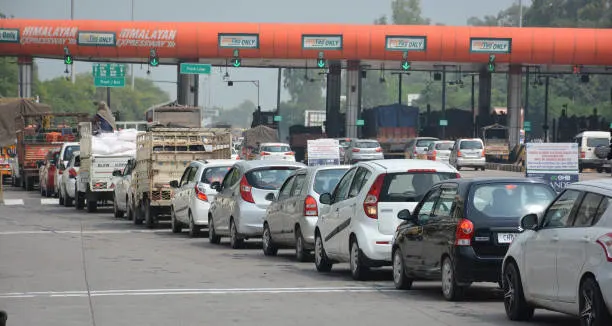No GPS-Based Tolling from May 1: Here’s What’s Really Happening at Toll Plazas
India’s highways are rapidly evolving, with automation and digital payments transforming how toll collection is done. Over the past year, there has been intense speculation around the introduction of GPS-based tolling as a replacement for FASTag. However, the government has now officially clarified that GPS-based tolling will not be implemented starting May 1, 2025.
This announcement puts to rest the confusion among commuters and transporters alike. But if GPS tolling isn’t happening, what changes are actually taking place at toll plazas starting May? Let’s break it down.
Background: Why GPS-Based Tolling Was Proposed
GPS-based tolling has been on the government’s roadmap for several years. The idea behind it is simple: use satellite tracking to charge tolls based on the actual distance traveled on tolled roads, rather than collecting tolls at physical checkpoints.
This system offers multiple advantages:
- Eliminates the need for toll booths
- Reduces congestion
- Charges commuters more fairly
- Supports a more transparent, digitized road usage framework
However, implementing GPS-based tolling on a national scale involves significant infrastructure, including integration with vehicle tracking systems (VTS), upgraded highway technology, and extensive backend support. As of now, India isn’t fully ready.
The Government’s Clarification
In mid-April 2025, the Ministry of Road Transport and Highways (MoRTH) issued a public statement clarifying that no GPS-based tolling system will be rolled out from May 1. The clarification was prompted by a series of viral news stories and online discussions suggesting that FASTag would be scrapped starting May.
The ministry said clearly:
“No new GPS-based tolling will be implemented nationwide starting May 1. The FASTag-based system remains fully functional and mandatory at all national highway toll plazas.”
This dispels misinformation and assures commuters that there’s no immediate change in how tolls are paid.
FASTag Continues to Rule
As of April 2025, over 98% of toll collection on national highways is done via FASTag. The system, launched in 2016 and made mandatory in 2021, uses Radio Frequency Identification (RFID) technology to deduct toll fees from a prepaid wallet linked to the vehicle’s tag.
Benefits of FASTag include:
- Contactless toll collection
- Reduced traffic at toll plazas
- Improved fuel efficiency due to minimal stopping
- Digital transaction history for vehicle owners
Given its wide adoption and ease of use, FASTag remains the government’s primary tool for toll management—at least for now.
What Is Changing at Toll Plazas from May 1?
While GPS tolling is not starting, important operational changes are being introduced at select toll plazas to enhance efficiency and customer experience.
1. New High-Speed FASTag Lanes
The National Highways Authority of India (NHAI) is introducing dedicated high-speed lanes at several busy toll plazas. These lanes will allow vehicles with valid FASTags and sufficient balance to pass through at higher speeds (up to 40 kmph), reducing congestion.
2. Penalties for Blacklisted or Insufficient FASTags
To streamline traffic flow, NHAI is getting stricter with enforcement. From May 1:
- Vehicles with invalid or blacklisted FASTags will not be allowed entry into FASTag lanes.
- Such vehicles may be issued double the toll as penalty.
- CCTV and ANPR (Automatic Number Plate Recognition) technology will be used to identify and record violators.
3. Pilot Projects for GPS Integration
Although full-scale GPS tolling isn’t happening now, pilot projects continue in select regions such as the Delhi-Mumbai expressway and Bengaluru peripheral roads. These are being used to test systems, gather data, and identify real-world challenges.
If successful, these trials will lay the groundwork for future nationwide GPS tolling—possibly in 2026 or beyond.
What You Need to Do as a Traveler
For most highway users, nothing changes from May 1. But here are a few quick tips to ensure smooth toll transactions:
- Ensure your FASTag is active and has balance
- Update KYC details if prompted by your issuing bank
- Avoid entering FASTag lanes without a valid tag
- Watch for new signage or dedicated lanes at updated toll plazas
If you’re a fleet owner or transporter, it’s also wise to track pilot zones where GPS tolling may be trialed. Keeping vehicles GPS-enabled could eventually become a regulatory requirement.
Why GPS Tolling Isn’t Happening Yet
Despite the buzz, there are multiple reasons why GPS-based tolling isn’t being implemented in May:
- Lack of full GPS coverage on highways in remote and hilly regions
- High cost of upgrading existing infrastructure
- Data privacy concerns around vehicle tracking
- Need for unified standards across multiple agencies and states
The government is working with industry stakeholders to address these issues gradually.
The Road Ahead: What to Expect
Even though GPS-based tolling is off the table for now, India is still moving steadily towards smarter, more efficient road usage systems. Here’s what we may see in the coming years:
- Hybrid tolling models combining FASTag and GPS
- Dynamic pricing based on congestion, time, or road quality
- AI-based traffic management at toll plazas
- Real-time toll alerts via vehicle infotainment systems
The long-term vision is to move towards seamless, contactless tolling with minimal human intervention.
Conclusion
The rumors about the rollout of GPS-based tolling in India from May 1, 2025, have been officially quashed. The current FASTag system remains in place, and no new nationwide changes are being implemented on that front. However, enhancements in toll plaza infrastructure and pilot testing of GPS tolling are still ongoing.
Highway users should continue using FASTag, ensure their tags are active, and stay informed about any local updates. The road to GPS-based tolling is still being paved—literally and figuratively—but for now, your FASTag is your best travel companion.



